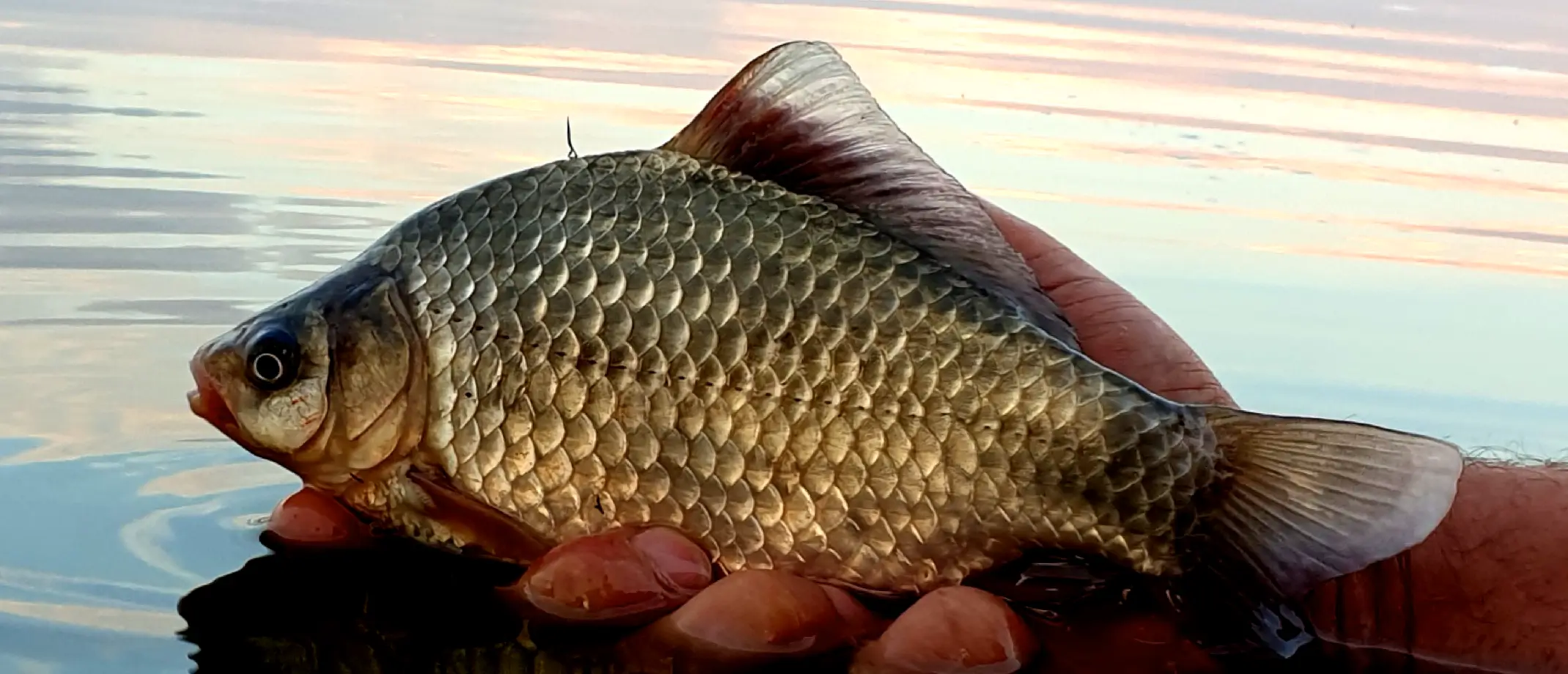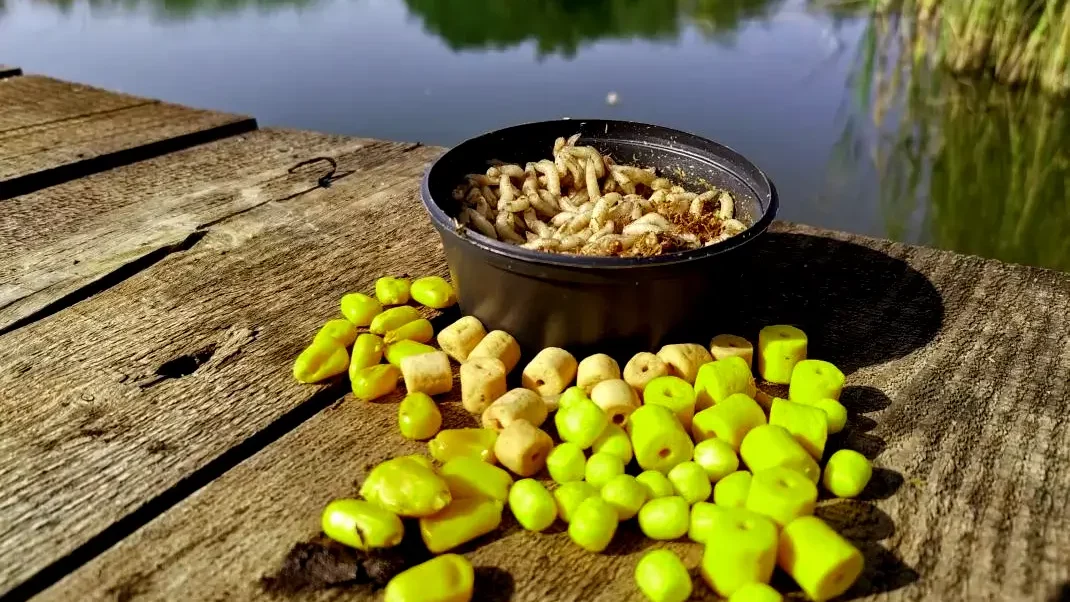Andrei Dumitrascu
Andrei Dumitrascu is the creative force behind our website. With a lifetime of experience on the water and an insatiable love for the culinary arts, he is not just a passionate angler but also a seasoned chef.
The crucian carp is one of the most widespread freshwater fish in Europe, belonging to the large family of common carp, Cyprinidae. It is highly appreciated by anglers for its sweet flesh and ease of capture.

It is a fish resistant to the most challenging conditions in which other freshwater fish could not survive. It does not require much oxygen, and the pH limits of the water it can inhabit are noteworthy. Additionally, it can survive out of water for several hours.
It has a short head, and its mouth is quite large with slightly fleshy lips and no whiskers. Its body is well-proportioned, covered with relatively large and thick cycloid scales. Environmental conditions and seasons greatly influence the color of the scales of this fish.
It feeds on almost anything it finds in the aquatic environment, and during winter, it buries itself in the mud at the bottom of the water, conserving energy until spring when the breeding season begins.
The spawning usually takes place until early summer, but in certain situations, another breeding period may occur in the fall. It reaches sexual maturity at the age of 3 years.
| Scientific Name | Carassius carassius |
| Maximum Weight | 3 kg |
| Average Weight | 0.3 - 0.5 kg |
| Average Length | 15 - 20 cm |
| Life Span | 10 – 15 years |
The crucian carp can be found in almost all waters in Europe, being capable of adapting to any environmental conditions, from the Arctic Circle to the south.
In spring, they usually migrate to shallower waters with plenty of vegetation to deposit their eggs, and then they search for food in various areas of the water. In the cold season, they hide in deeper parts of the water to hibernate.
On lakes you can find it pretty much everywhere, especially in areas with abundant vegetation and relatively calm waters.
They can grow larger due to the generally more abundant food supply and less competition. Also, they have the potential to reach a larger size compared to their river-dwelling counterparts. They have access to more stable food sources and graze on aquatic plants, algae, and small invertebrates that are abundant in still waters.
In small ponds and warm areas where oxygen levels are very low, it can be the only fish species that survives.
On rivers, it can be encountered in areas with slower currents, near the banks, in bays, or in areas abundant in vegetation or fallen trees in the water.
Crucian carps from rivers tend to be smaller on average. The limited space and competition for resources may result in slower growth rates.
They may face challenges when it comes to spawning. The fast-flowing water can make it harder for them to find suitable spawning sites, and the survival rate of their offspring may be lower.
Often, it gives itself away, making a lot of noise in shallower waters and jumping out of the water into feeding areas near reed beds.
In general, since the crucian carp is omnivorous, it can be caught with almost any type of natural bait, but under certain conditions, it may even attack artificial baits.
Here is a list of the most enticing baits that will certainly help you catch this fish:

This fish tends to be harder to catch in conditions of sudden increase or decrease in water level or atmospheric pressure.
For crucian carp, we can use a wide range of groundbait, and these should ideally consist of only natural cereal-based ingredients. Of course, we can also add corn, boiled wheat, boiled hemp seeds, maggots, or chopped worms.
Depending on the season and the frequency of bites, we can incorporate additives in the form of powder or liquid, as there is a wide variety of models available in the market. Start with a small amount and if you notice good results, you can add more.
It is preferable to pre-bait, regardless of the fishing method we choose. Then, after the fish gather in our swim, it is advisable to maintain this swim constantly with groundbait. The amount of groundbait should be in line with the fish’s appetite and the water temperature. Too much groundbait can satiate the fish and reduce the frequency of bites.
The groundbait should be properly moistened so that it disperses only on the substrate and not in the water column. This helps avoid attracting other small fish species that we do not want at our fishing spot.
We can say that crucian carp is undeniably one of the tastiest freshwater fish, although a lot of anglers prefer not to keep it. Due to the fact that it has many bones, it requires a special preparation technique; the flesh should be finely scored every 5 millimetres across the spine, from tail to head.
Crucian carp are known to be more active during dawn and dusk, making early morning and late afternoon good times to target them.
Although in certain conditions, this fish can be caught throughout the year, the best results will be achieved from early spring until the end of summer.
By signing up you agree to receive fishing, foraging and cooking news. See Privacy Policy.